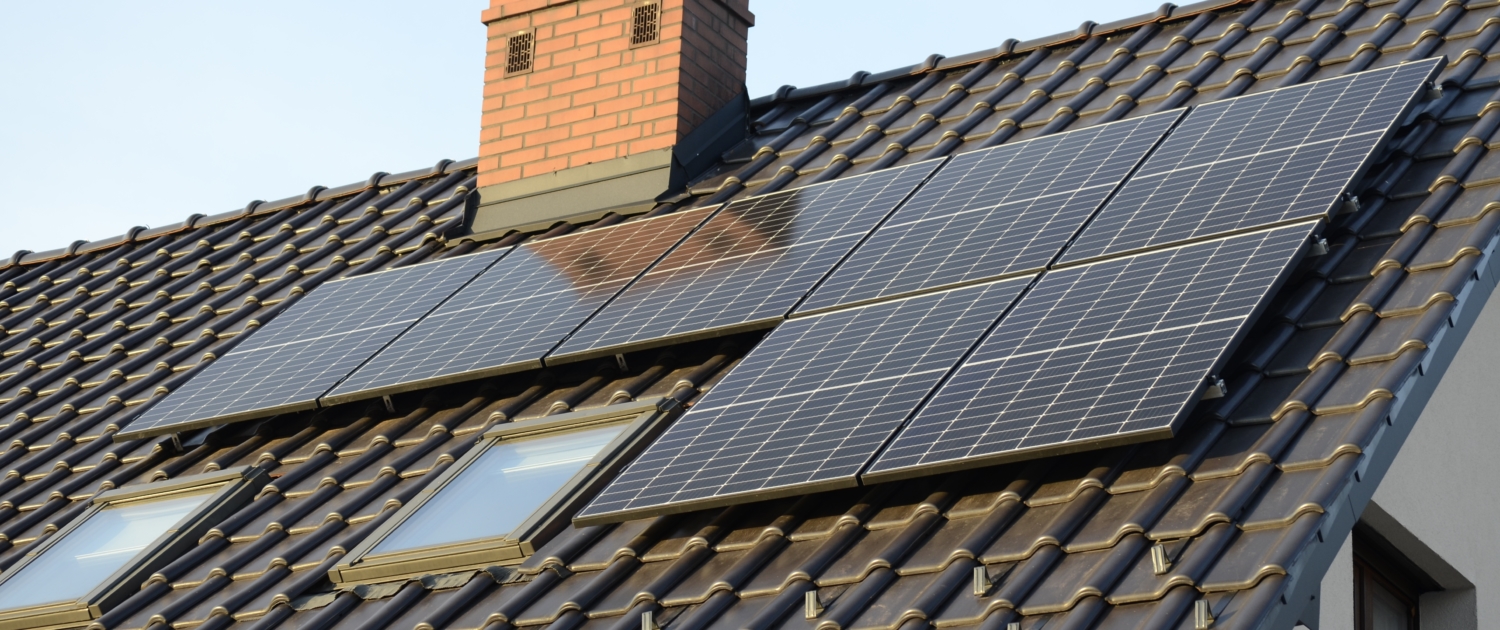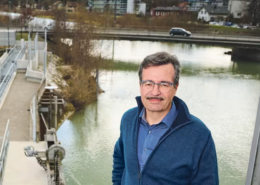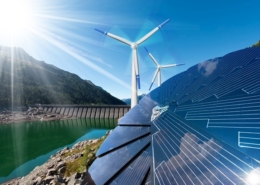What can optimizers really do for PV systems?
Anyone who installs a PV system on their roof wants to produce as much electricity as possible. A chimney that regularly casts shadows reduces the yield. So-called optimizers promise to help. What are they good for? Where do they make sense? Where not so much? Researchers at the Zurich University of Applied Sciences (ZHAW) in Winterthur, supported by the Swiss Federal Office of Energy, have found out: Optimizers can improve yield, but they can also make it worse. It depends on the individual case.
How much electricity a PV system actually produces depends on various factors: A chimney casting shadows, a broken module or snow on the system can reduce the yield. Since the individual cells of a module and even several solar modules are interconnected, separate control of shaded and unshaded cells is not readily possible.
This is where the optimizer comes into play. With this electrical device, it is in principle possible to use the power of the weakest link in the chain without partially or completely bypassing it. In other words, the module that produces less because shade falls on it is independently controlled by the optimizer and no longer affects the yield of the others.
The role of the MPP:
The Maximum Power Point (MPP) refers to the operating point of a module or solar system at which the optimal power is obtained at a point in time and the corresponding conditions (irradiation, temperature, etc.). Electrical voltage and current define this MPP. In solar systems with shading, the optimal current yield of each module may not be achieved in some cases if the MPP is set for shaded and unshaded modules together, since they carry the same amperage. Then, modules with lower solar irradiance may affect those with high irradiance, so either the latter will not produce full power or the affected module will be partially bypassed. A system with optimizer, on the other hand, allows independent control of the modules equipped with it, which in theory means that they are always operated optimally, provided that they themselves are efficient enough.
Up to 25 percent more yield! Such promises are made by suppliers when one installs these electrical devices to optimize the solar power system. Are such additional yields realistic? Energeiaplus asked Franz Baumgartner. He conducted the study at the ZHAW on behalf of the SFOE.
Energeiaplus: 25 percent more power with an optimizer. Can the devices fulfill this promise? What does your study say?

Franz Baumgartner heads the Energy and Environmental Technology course at ZHAW and is a lecturer in photovoltaic systems and renewable energy; Image: ZHAW
Franz Baumgartner: Power optimizers are able to increase the yields of PV systems with shading. However, this is only possible in special scenarios. In all cases investigated, we have currently been able to determine a maximum, additional, annual energy yield of up to 5%, which is in stark contrast to the manufacturer's specifications.
When does an optimizer make sense? Respectively when is it worthwhile?
In terms of annual energy yields, our results show that the use of optimizers makes sense for PV systems in residential areas with moderate to heavy shading, or for small systems with multiple orientations. So it should be a niche market, but is still sold very often today. Medium shading can be, for example, shading from two chimneys on a system, or a ventilation pipe plus a nearby tree. Strong shadows are for example neighboring buildings that cast a large shadow on the plant.
When would you rather advise against optimizers?
You have to consider that the optimizer itself also needs electrical energy. Or to put it another way: depending on the situation, the device compensates for the additional yield. This is especially the case if there is no or only little shading and there are only up to two different alignments. Then the same amount or rather less power is achieved by the system than would be the case with a system without optimizer and two separate circuits with conventional power electronics.
Optimizers are also a cost issue. Prices vary widely. What do you recommend to end customers?
The initial cost tends to be a few percent higher for a Power Optimizer system. But more important is the reliability of the electronics over the many years they are exposed to wind, rain, but especially high temperatures. Temperatures behind the module can rise to over 70 degrees in the summer, which can cause failures of the electronics.
It should also be noted: in case of failures, the cost of a single optimizer is covered by the manufacturer's warranty. However, the cost of the solar installer's work to repair it, and many times over, is not. This can go into the money (several hundred or rather several thousand francs, if the replacement on the roof becomes complicated).
But the market leader makes billions in sales, as you wrote in a technical article (insert link). Do you therefore also see your study as an educational exercise so that end customers are not disappointed?
As an independent research center, we have a mandate to produce objective research results based on measurements and facts. Since there is still no regulation for the electrical yield specifications for power optimizers, we would like to inform end customers with results regarding the subject matter, so that they in turn can ask their specialist companies the appropriate questions. At the same time, I am leading an international working group of the IEA and the IEC standards committee to be able to evaluate this transparently and fairly for all electronic components.
Your conclusion? Are optimizers just hype or the future?
The research and development of new efficient technologies in the field of renewable energies is important. Especially finding a solution for the influences of shading on the electricity yield of solar plants is essential for the future expansion in urban areas. The respective specialized companies must give more weight to these special questions in the planning than they do today. We are happy to help, so that complex niche applications do not dominate the market with all the risks that then lie with the end customer.
For whom are the results relevant?
With our research, we want to educate PV installers, planners, but also end customers about this difficult topic. We hope that in the future it will be possible for PV planning companies to base their planning on the correct yield values and no longer on marketing data. Ultimately, this will also benefit customers.
The results of your study are based on laboratory measurements. How did you proceed?
Since the yield differences in the majority of cases of shading are around one to two percent, this is difficult to measure accurately in outdoor measurements. This is due to the fluctuation of solar irradiation and the fact that in practice two identical roofs are hardly ever equipped next to each other with two different systems, i.e. one with, the other without optimizer. Our ZHAW research results are therefore based on precise indoor laboratory measurements on commercial optimizers and conventional inverters and specially developed simulation software to determine the effects on the annual yield.
Now you want to expand the research project even further and also carry out measurements in the field. What do you expect from this?
With thermal measurements in the field, we are investigating another effect of using optimizers, namely the potential reduction of the hotspot temperature of shaded solar cells. In other words, when solar cells are shaded, it is possible that the solar module is partially bypassed by setting the MPP. In this case, the partially shaded solar cells heat up. Theoretically, by controlling the optimizers, these conditions occur less frequently, reducing the heating of the shaded solar cell and thus reducing the load on the solar module.
Here's how the study went:
In the laboratory of the Institute of Energy Systems and Fluid Engineering at the ZHAW School of Engineering in Winterthur, the efficiency (or losses) of four common power optimizer models, as well as four solar inverters, were measured. High-precision measuring equipment and electrical devices (current sources) were used, which can simulate the behavior (i.e. current and voltage) of a large number of different solar modules. In particular, the efficiency of the optimizers and inverters was determined for a large number of applications. Based on these measured values, a mathematical-physical model was developed which can calculate the losses for all possible operating points.
In addition to the measurements, a PV simulation tool has been developed within the research group during the last three years, which precisely represents the position of the sun, irradiation, temperature, shading and electrical properties of PV modules. The simulation application also implements the idealized control by the devices (inverter or power optimizer), as well as the aforementioned physical model of the losses. Consequently, a wide variety of solar plants with numerous shading cases can be simulated and the annual electricity yields can be determined. Accordingly, this allows us to calculate a solar plant with Power Optimizer and a plant without these devices under the exact same conditions. We can thus make precise comparisons.
More information about the ZHAW study is available here:
Master thesis by Cyril Allenspach, ZHAW https://digitalcollection.zhaw.ch/bitstream/11475/27358/3/2023_Allenspach_Cyril_MSc_SoE.pdf
Details about the ZHAW study: https://www.zhaw.ch/de/forschung/forschungsdatenbank/projektdetail/projektid/4870/
Interview: Brigitte Mader, Communication, Swiss Federal Office of Energy
Photo: shutterstock; ID: 2122613513; iyks
 shutterstock
shutterstock
 5 Vote(s), Durchschnitt: 4,20
5 Vote(s), Durchschnitt: 4,20 EnergieSchweizKleinwasserkraft ist gross im Kommen
EnergieSchweizKleinwasserkraft ist gross im Kommen  UmweltarenaInfos und Games zum Klimaschutz: Neue Ausstellung von EnergieSchweiz in der Umweltarena
UmweltarenaInfos und Games zum Klimaschutz: Neue Ausstellung von EnergieSchweiz in der Umweltarena  ShutterstockDank kreativer Wohnkonzepte im Alter energieeffizient leben
ShutterstockDank kreativer Wohnkonzepte im Alter energieeffizient leben  ShutterstockBenchmark : Miser toujours plus sur le renouvelable
ShutterstockBenchmark : Miser toujours plus sur le renouvelable 
 BFE
BFE Shutterstock
Shutterstock
Trackbacks & Pingbacks
[…] einer Studie der Zürcher Hochschule für Angewandte Wissenschaften (ZHAW) in Winterthur (lesen sie hier) können Optimierer die Energieausbeute von PV-Anlagen verbessern, in manchen Fällen aber auch […]
Kommentare sind deaktiviert.